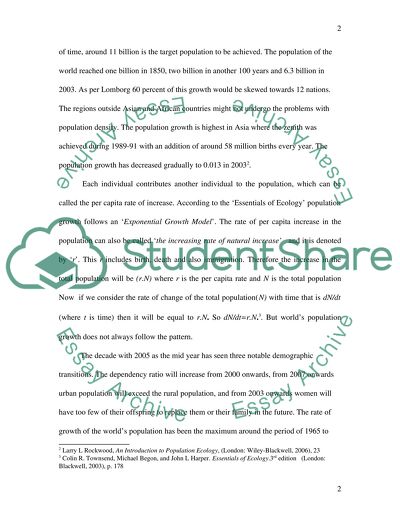Cite this document
(Human Population Ecology Essay Example | Topics and Well Written Essays - 2250 words, n.d.)
Human Population Ecology Essay Example | Topics and Well Written Essays - 2250 words. https://studentshare.org/environmental-studies/1572476-human-population-ecology
Human Population Ecology Essay Example | Topics and Well Written Essays - 2250 words. https://studentshare.org/environmental-studies/1572476-human-population-ecology
(Human Population Ecology Essay Example | Topics and Well Written Essays - 2250 Words)
Human Population Ecology Essay Example | Topics and Well Written Essays - 2250 Words. https://studentshare.org/environmental-studies/1572476-human-population-ecology.
Human Population Ecology Essay Example | Topics and Well Written Essays - 2250 Words. https://studentshare.org/environmental-studies/1572476-human-population-ecology.
“Human Population Ecology Essay Example | Topics and Well Written Essays - 2250 Words”. https://studentshare.org/environmental-studies/1572476-human-population-ecology.


